Run Your Events the Right Way With Dynamics 365 Marketing — Part 2
Having spoken to a lot of customers who need event management capabilities, it never ceases to amaze me how often those who have already purchased Dynamics 365 Marketing — usually for its B2B marketing emails and customer journeys functionality — are surprised to hear event management is included in the product as well. It has been part of Dynamics 365 Marketing from the very beginning, but it is often overlooked and not spoken about enough. Let’s have a look at what is available and how it can help make your event planning a success.
In Part One, I covered the event planning in Dynamics 365 Marketing. This article will cover the event execution and post-event functionality.
Event Execution
Event execution includes:
- Event website and registration
- Social media event advertising
- Personalized email design
- Multi-channel event campaign
- Real-time customer experience
- On-site event management
Event Website and Registration
Once you have configured your event and gone live with it, the product creates an event website with the information you have provided. This is a key feature, as you can get a slick looking website with all your relevant event information in just a few clicks without the need for any coding experience.
The website will change the registration experience accordingly depending on whether you have configured the event with an event-level registration or session-level registration. We spoke more about this feature in the previous article.
One thing that stays consistent in both types of events is the ability to define custom registration fields. These are additional questions that customers can answer as part of their registration. Some common examples are asking for attendees’ dietary requirements or areas of particular interest. Later, you can use that information for further segmentation and more tailored personalization.
It’s worth pointing out that you only get the URL for the event once you go live with the event record.
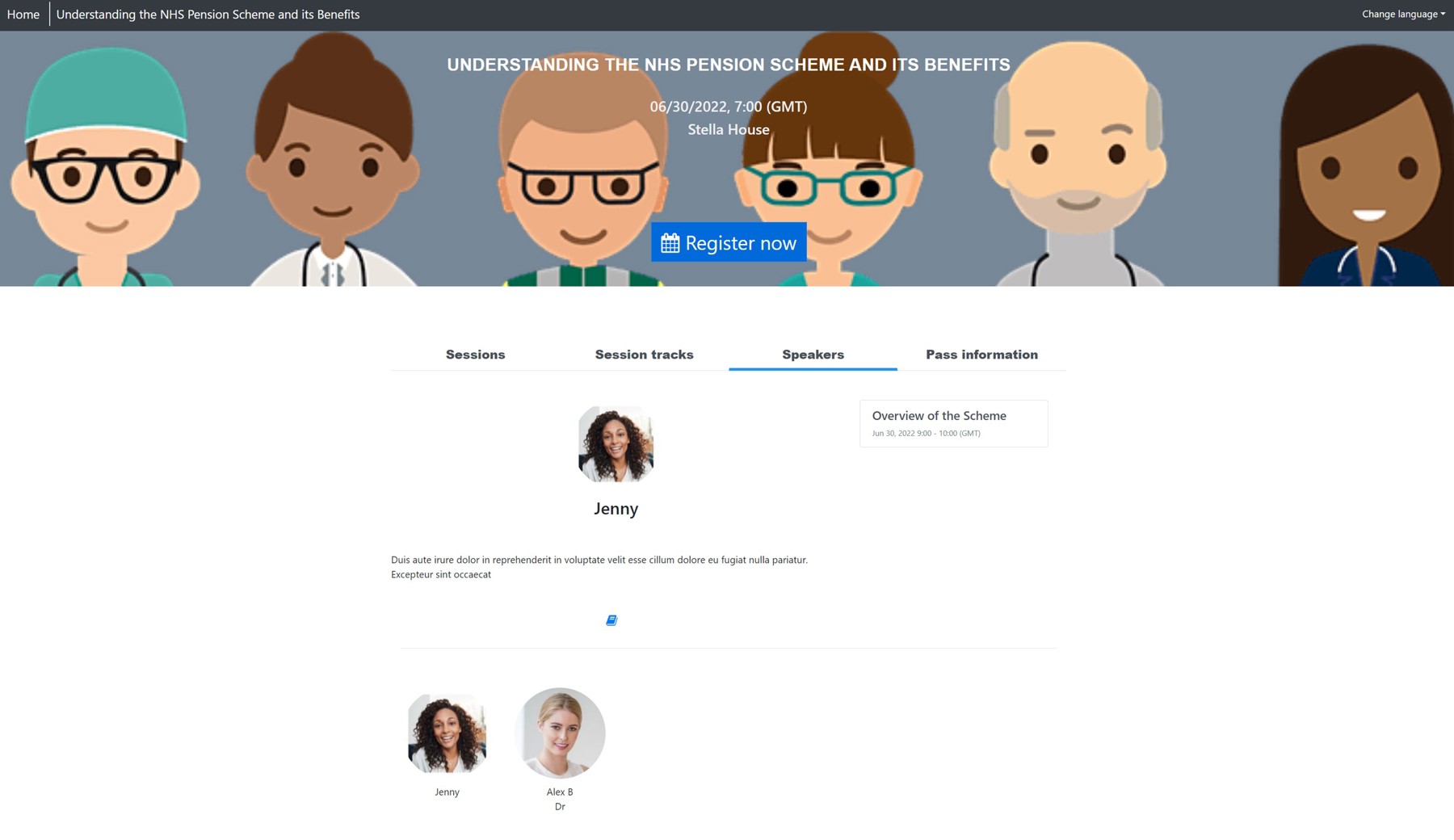
It is important to mention a caveat on Dynamics’ website implementation here. The website functionality is powered by Power Pages, which is covered by a separate license and has an additional cost associated to it. You can choose not to associate Dynamics 365 Marketing to a portal, in which case you are responsible for hosting your event registration forms on your own website.
Social Media Event Advertising
Once you have the event URL, you can advertise it on social media. Dynamics 365 Marketing has native support for four channels — Twitter, Facebook, LinkedIn, and Instagram. You can schedule posts so that they go live at the most convenient time without any extra human intervention.
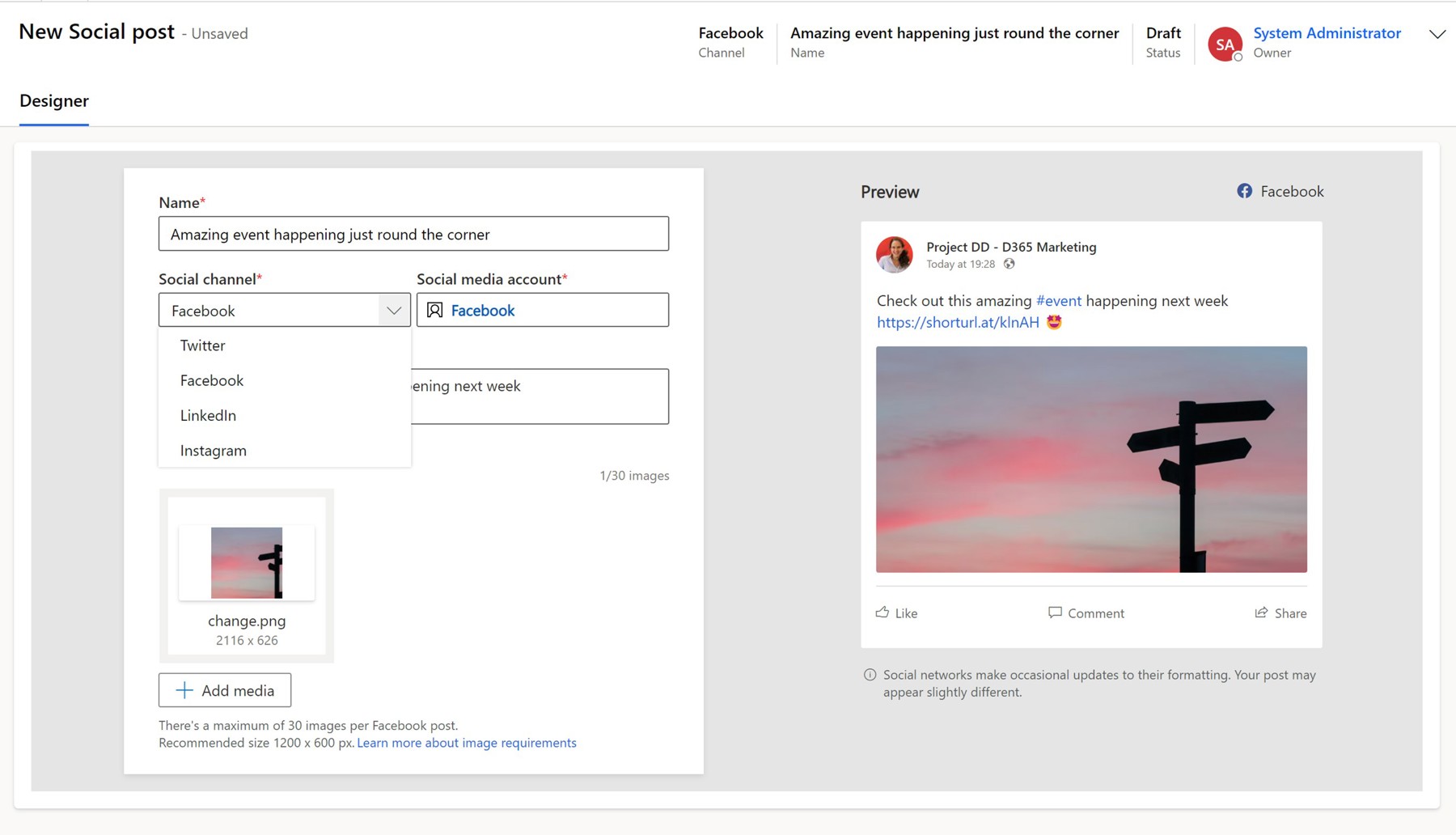
Personalized Email Design
Once people start registering for the event, you can handle the registration confirmation process manually, or send all of the additional information through the Marketing solution. The latter allows you to create highly personalized, branded emails, and easily add dynamic content through a drag-and-drop interface. For example, depending on attendees’ responses to custom fields, different groups of event registrants can receive their own personalized version of the email.
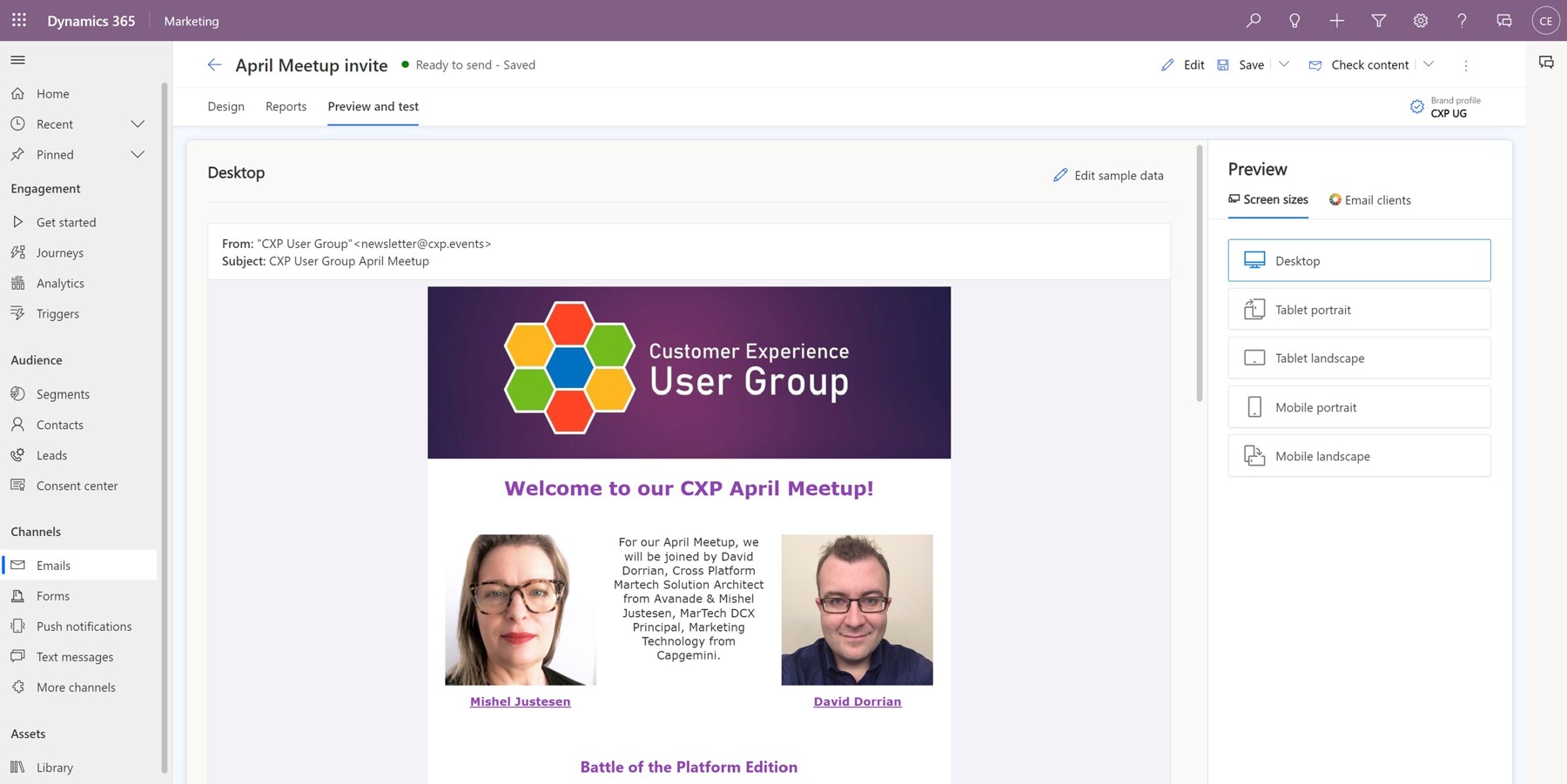
Multi-Channel Event Campaign and Real-Time Customer Experience
Once the email is created and sent, you might want to react to your event attendees’ behaviour in real time. You can do that by creating a multi-channel campaign in Dynamics 365 Marketing. Microsoft calls this a journey. Using this tool, you can automatically send a message to all people who register for your event. You can then configure it to check whether they have opened the email after a preconfigured amount of time and send them the relevant event details and/or reminders through a different channel if they haven’t interacted with the first email.
Out of the box, Dynamics 365 Marketing supports three channels — email, text message and push notifications — but it can easily be configured to include additional channels like WhatsApp, Viber or others. Another easy way to include additional channels is to call a Power Automate flow from your campaign journey. The feature was recently added to the marketing solution and has massively simplified the custom channels experience.
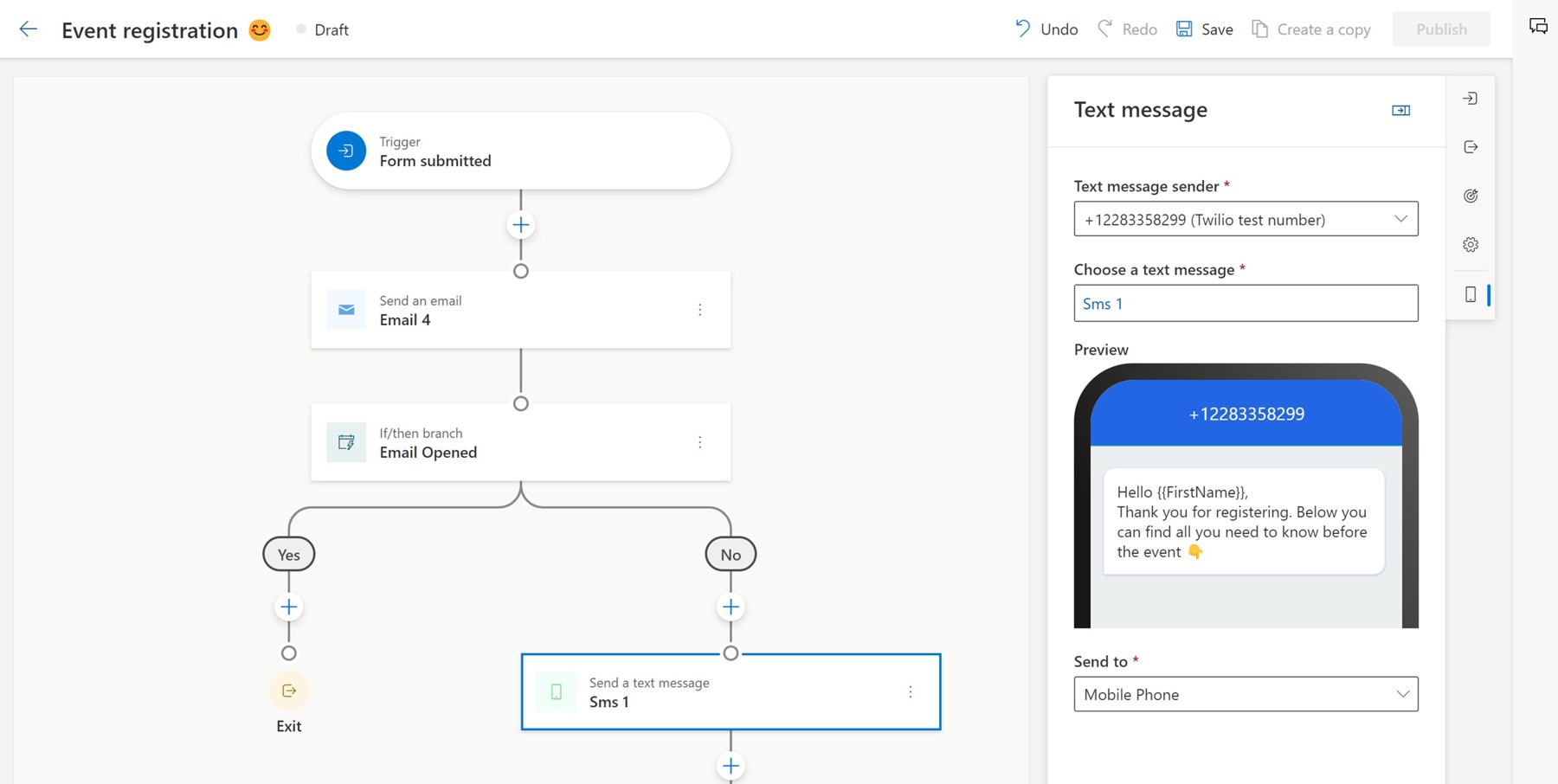
Finally, it’s worth noting that any customer going through a journey, whether it’s via an out-of-the-box or a custom channel, counts towards your Dynamics 365 Marketing monthly interaction quota.
On-Site event management
In the previous article, we spoke about running webinars, but with on-site events, you will want to ensure that the most appropriate room is booked and available. Dynamics 365 Marketing has a room reservations functionality where you can view a calendar showing the rooms that are assigned to the currently displayed event and its sessions.
The location in Dynamics 365 Marketing is hierarchical, meaning that once you configure the building, you get the option to configure the room(s) within that building, as well as their layout.
Venue constraints is another important consideration with on-site events. From a technical point of view, you record venue constraints on all 3 levels — building, room, and layout. If you are lucky enough to have a very popular event where you might expect more interest than physical capacity, you can enable a waitlist.
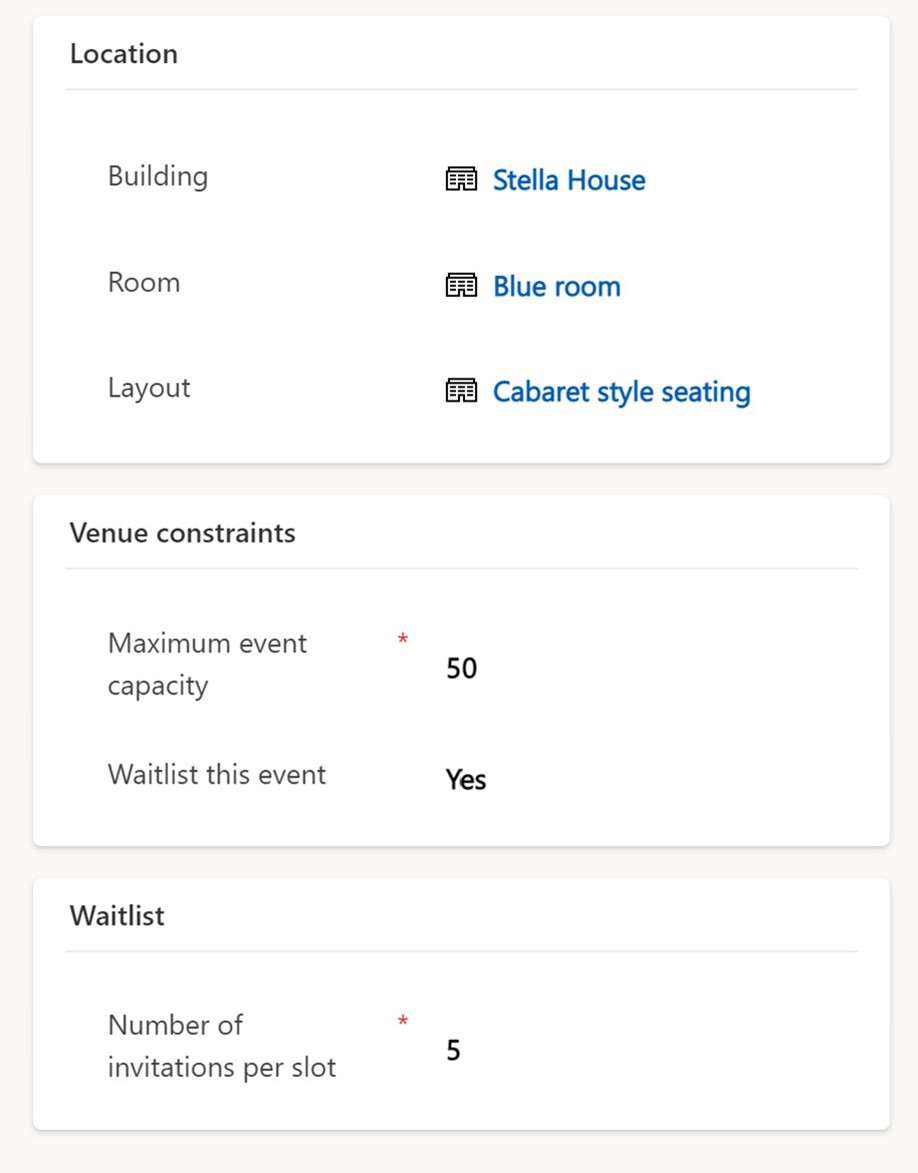
Post Event
Post-event features include:
- Customer feedback
- Analytics and insights
Customer Feedback
Customer feedback in the Power Platform is collected through Dynamics 365 Customer Voice, which is the survey solution within the Microsoft stack You can create surveys, apply styling and corporate branding, and implement basic and advanced question logic. So, for example, based on a customer’s response to a question, you can either show a new heading with an additional question or skip to the end of the survey.
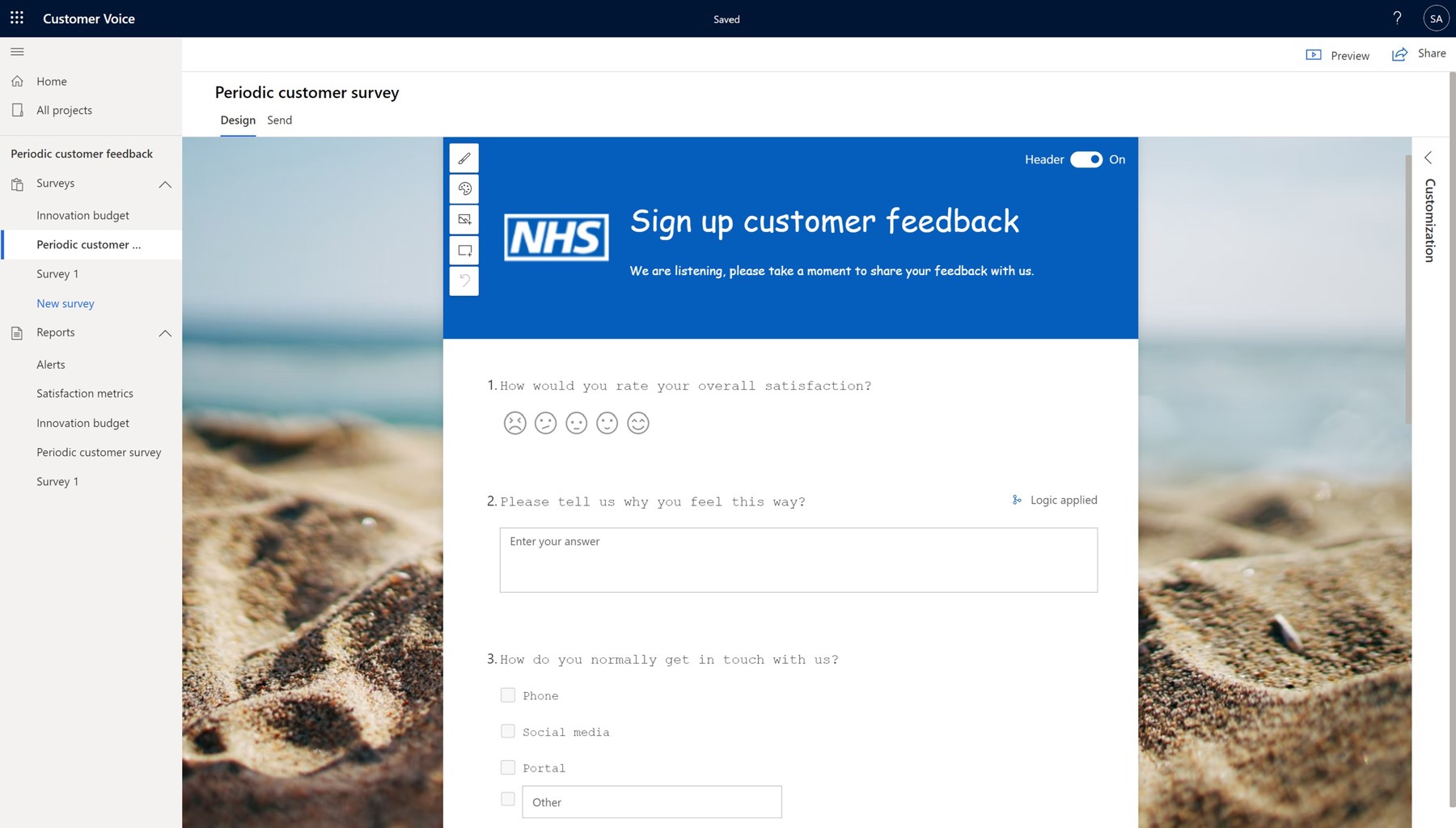
Customer Voice has native integration with Dynamics 365 Marketing. So once the survey has been designed, you can send it through the journey functionality mentioned above. In doing so, you can add an additional level of personalization and make sure the message is relevant to its recipient.
Analytics
In Dynamics 365 Marketing, you can see abundant analytics about how your campaign, survey and event has performed. For example, on the event screen you can see all of the event registrations.
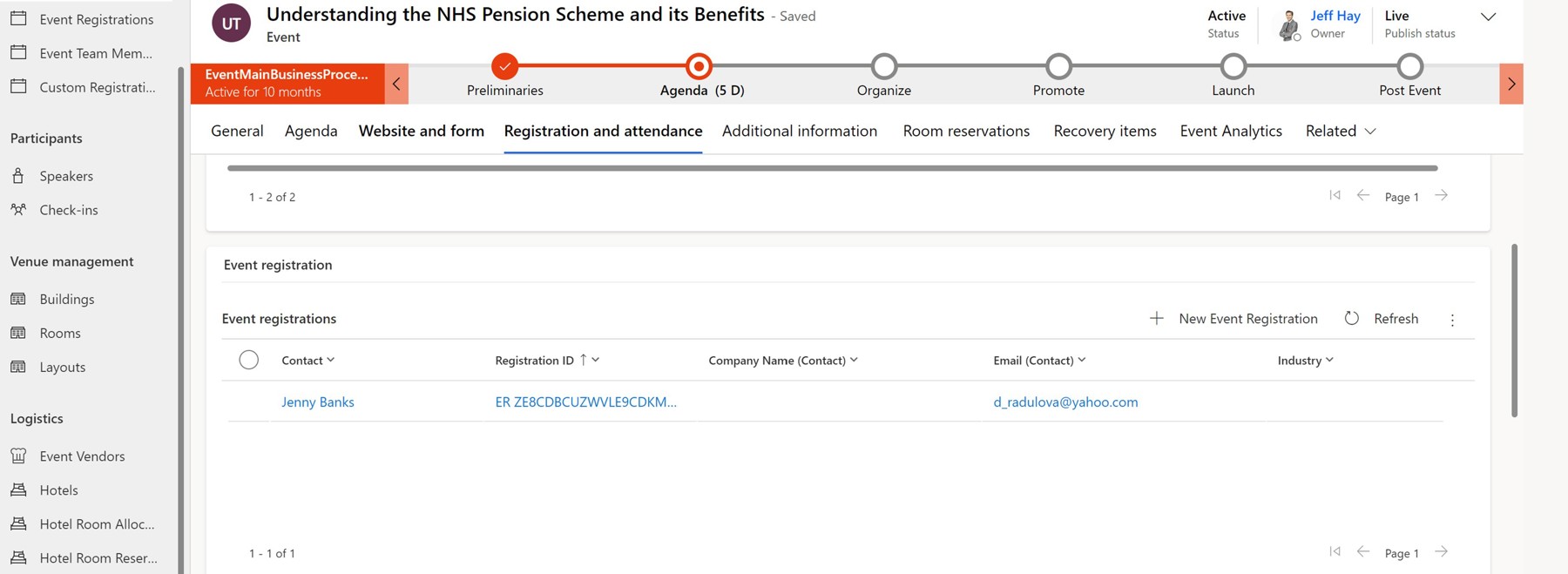
If your organization is already invested in the Power Platform, chances are you are already using Power BI. If you are not, you should strongly consider it for the comprehensive and advanced analytics capabilities it provides for Dynamics 365 Marketing. Microsoft’s product team has created a number of Power BI report templates that you can download and put to use in just a few minutes. At the moment, there are seven reports you can lift and shift:
- Generic template (framework and tools)
- Basic leaderboard report
- Email marketing report
- Segmentation report
- Marketing program effectiveness
- Marketing reach analysis
- Marketing form submission report
Final words
That concludes the second part of this event management overview. If you have more specific questions about using the event execution and post-event features within Dynamics 365 Marketing, here are some useful links:
- Integrate Marketing with a CMS system, Dynamics 365 Portals, or Power Apps portals: https://learn.microsoft.com/en-us/dynamics365/marketing/portal-optional
- Send email: https://learn.microsoft.com/en-us/dynamics365/marketing/real-time-marketing-email-get-started#create-an-email
- Create a trigger-based journey: https://learn.microsoft.com/en-us/dynamics365/marketing/real-time-marketing-trigger-based-journey
- Create custom channels in real-time marketing: https://learn.microsoft.com/en-us/dynamics365/marketing/real-time-marketing-create-custom-channels
- Dynamics 365 Customer Voice: https://learn.microsoft.com/en-us/dynamics365/customer-voice/about
- Access and interpret analytics: https://learn.microsoft.com/en-us/dynamics365/marketing/real-time-marketing-analytics
- Raise triggers from a journey to run another journey or Power Automate flow: https://learn.microsoft.com/en-us/dynamics365/marketing/real-time-marketing-custom-actions
- The marketing analytics reporting framework (generic template): https://learn.microsoft.com/en-us/dynamics365/marketing/marketing-analytics/analytics-gallery-framework


